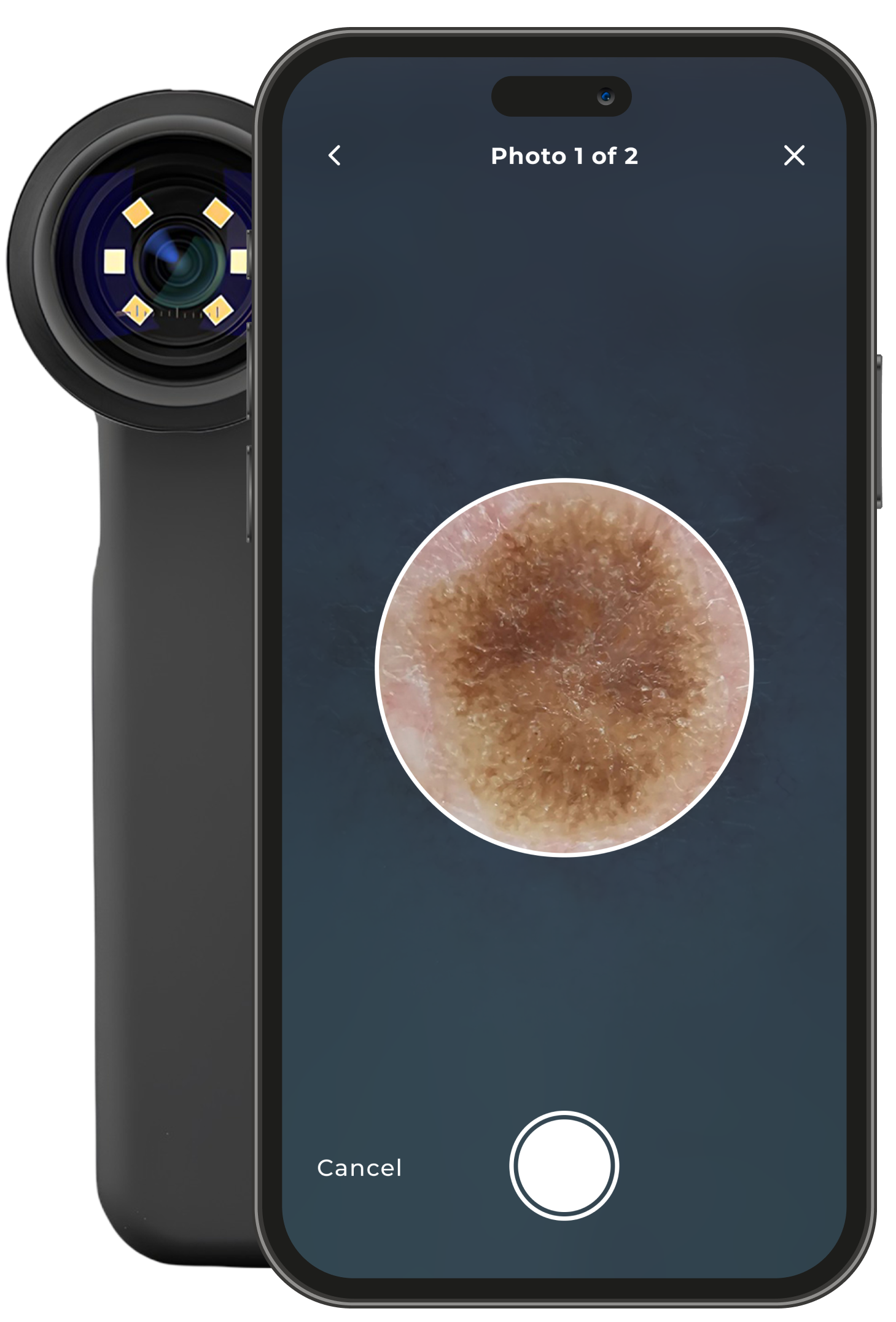
Blemish Removal
Say goodbye to unwanted skin imperfections with electrolysis blemish removal at our Bristol salon. Our expert therapists use precise electrolysis techniques to effectively treat skin tags, blood spots, and other blemishes, leaving your skin smooth and clear. Book your consultation today for flawless skin!
Types of Blemish Removal
Got a blemish but unsure what it is? Submit to Rebecca for identification!
Got a mole you want to keep track of? Sign up for Map My Mole
Age Spots
Age spots are dark patches of hyperpigmentation caused by natural or artificial UV light exposure. They vary in shape and size, commonly found on the face, body, and hands. Unlike freckles, they do not increase in number or darken with UV exposure. Treatment should be gentle, as they may take longer to heal post-procedure.
Blood Spots
Blood spots, also known as Campbell de Morgan or Cherry Angioma, are common harmless skin blemishes. They're clusters of dilated capillaries on the skin's surface, varying in shape, size, and redness. Caused by age-related blood vessel dilation, they can be treated.
Skin Tags
Skin tags are soft, flesh-coloured growths varying in size and shape. Painless and noncancerous, they're caused by friction, age, and predisposition. Found commonly on the neck and trunk, they can appear elsewhere. Made of loose fibrous tissue, they can grow and should be removed.
Filiform Warts
Filiform warts have a unique appearance with long, narrow projections extending 1 to 2 millimetres from the skin. They can be yellow, brown, pink, or skin-toned and typically don't form in clusters. Commonly found around the eyelids and lips, they are often referred to as facial warts. These warts are harmless but can be bothersome due to their prominent location. Filiform warts are easily treated, and our skilled team can help you achieve smooth, clear skin.
Milia
Milia are small white pearls under the skin's surface, often around the eyes or cheeks, caused by dry skin cell buildup blocking sebaceous glands. Regular exfoliation and moisturising can help. While not infectious, milia are easily treated using advanced electrolysis.
Mole Reduction
Moles are benign skin lesions that vary in colour and size, found anywhere on the face or body. They can appear due to UV exposure, hormones, or genetics. Moles should be symmetrical, uniform, and have well-defined borders, commonly less than half a centimetre.
Clients seeking mole reduction should first consult their doctor to ensure the mole is safe to treat. In blemish removal, this procedure is called reduction, as treated moles may leave a small “freckle” mark. Clients should consider if they prefer this over the mole. If hairs are present, they should be removed with electrolysis first, often reducing the mole itself. Always check with your insurance for coverage.
Sebaceous Cysts
Sebaceous Cysts, found on the face and body, are smooth, dome-shaped masses of overgrown skin cells (keratin) within a capsule. Typically non-cancerous, they may grow slowly over time and become uncomfortable. Treatment involves removal if they cause issues or discomfort, especially if they grow large, reappear quickly after removal, or show signs of infection. Consult your GP if these characteristics are observed.
Sebaceous Hyperplasia
Sebaceous hyperplasia is a benign skin condition characterised by small bumps caused by damage leading to overproduction of sebum. These bumps, often yellowish or whitish, resemble a ring donut with an indented centre. Common in adults, they can be single or multiple and are treatable with progressive methods.
Seborrheic Keratosis
Seborrheic warts, or keratosis, are common, harmless growths on the skin's surface. Formed from a build-up of keratinocyte cells, they're typically pigmented and appear post-40. Found all over the face and body, they have a rough texture and can vary in colour from brown to black. Removal is recommended to prevent growth.
Spider Naevus
Spider naevi are clusters of tiny, visible blood vessels that resemble a cherry angioma with radiating veins. Common on the face and cheeks, they can result from trauma, pregnancy, hormonal changes, or genetics. While not infectious, they can be effectively treated with electrolysis.
Syringomas
Syringomas are harmless eccrine sweat duct tumours, found on various body areas. Skin-coloured or yellowish, they are firm, rounded bumps typically 1-3mm in diameter. More common in women, they can be itchy or cause irritation but are easily treatable, though they may recur.
Verruca Removal
Verrucae are painful growths on the soles of the feet, often containing black speckling fragments. Different from corns and calluses, they are caused by the human papilloma virus (HPV) and are contagious. Treatment by advanced practitioners or medical professionals is recommended to effectively remove verrucae and prevent spreading.
Thread or Spider Veins
Small, visible red or purple veins that appear close to the surface of the skin, commonly on the face or legs, often caused by sun exposure, genetics, or pressure.
Warts
Warts are hard, rough growths similar in colour to your skin, caused by the human papilloma virus (HPV). They're non-cancerous but contagious, appearing as small, rough nodules on the hands. Treatments are available at our salon to effectively manage and remove warts.
Xanthoma
Xanthoma, including Xanthelasma, appears as yellow patches near the eyes, containing cholesterol deposits. While not harmful, they can indicate high cholesterol levels or heart disease risk. Treatment is straightforward for small patches but clients should consult a doctor for a health check. Check with your insurance before proceeding.
Map My mole
Worried about a mole or skin lesion? Let’s take a closer look.
Map My Mole is a digital mole-mapping service that allows us to photograph and assess moles or lesions in the clinic before sending them to expert dermatologists for a professional opinion. It’s quick, non-invasive, and gives you peace of mind without a trip to the GP.
Quick, clear photos taken in-clinic
Reviewed by UK dermatology specialists
Peace of mind in days, not weeks
Whether it’s new, changing, or just concerning you, don’t wait and wonder – book a consultation today and get it checked by the professionals.


















